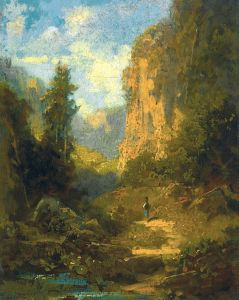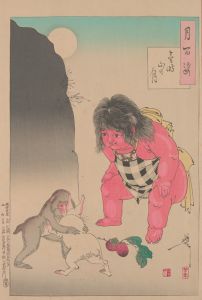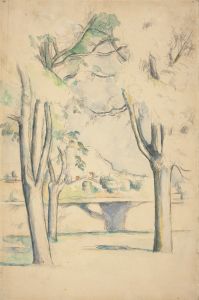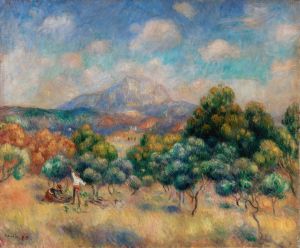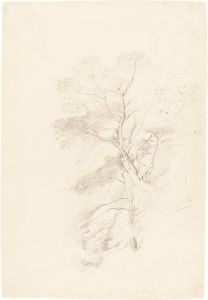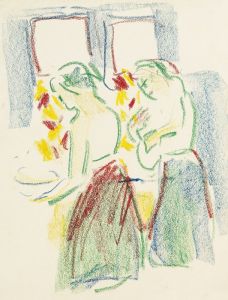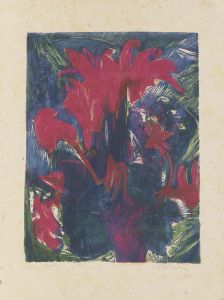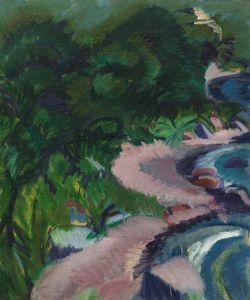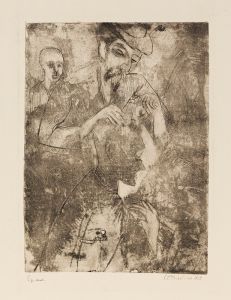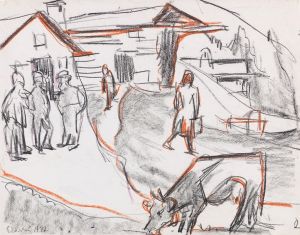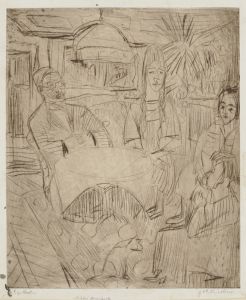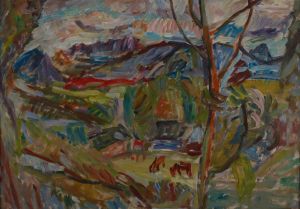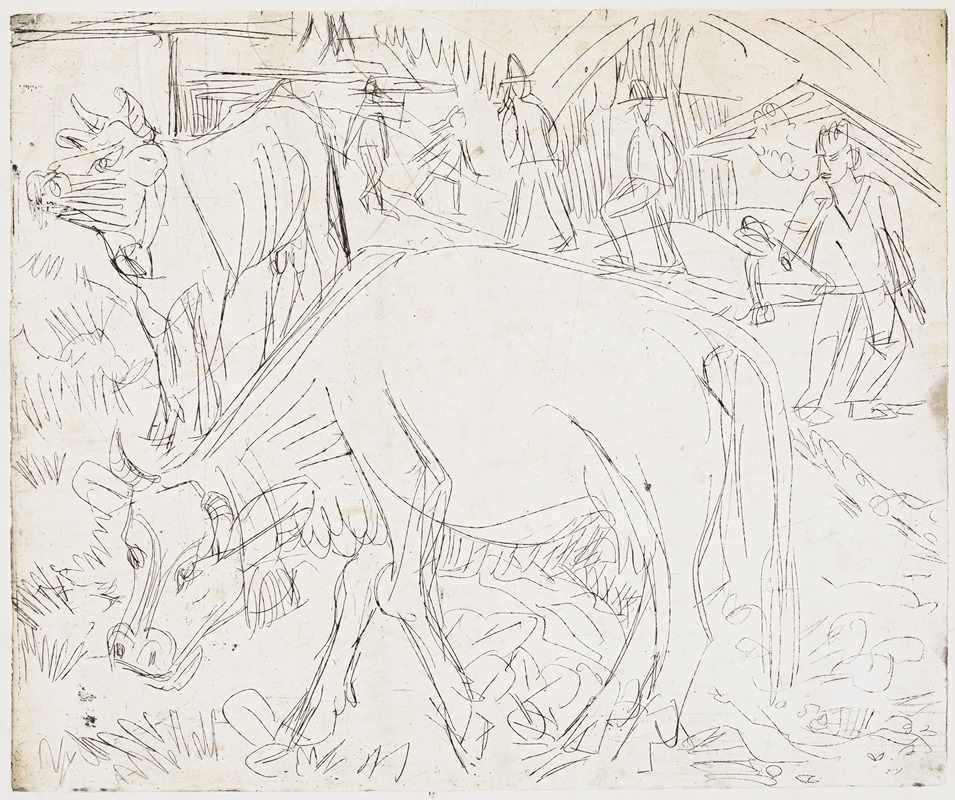
Alpszene
A hand-painted replica of Ernst Ludwig Kirchner’s masterpiece Alpszene, meticulously crafted by professional artists to capture the true essence of the original. Each piece is created with museum-quality canvas and rare mineral pigments, carefully painted by experienced artists with delicate brushstrokes and rich, layered colors to perfectly recreate the texture of the original artwork. Unlike machine-printed reproductions, this hand-painted version brings the painting to life, infused with the artist’s emotions and skill in every stroke. Whether for personal collection or home decoration, it instantly elevates the artistic atmosphere of any space.
Ernst Ludwig Kirchner's painting Alpszene (translated as "Alpine Scene") is a work by the German Expressionist artist, who was a founding member of the influential art movement Die Brücke (The Bridge). Kirchner, known for his bold use of color and dynamic compositions, created works that often reflected his interest in modern life, nature, and the human figure. While specific details about Alpszene are limited, the painting is believed to depict a mountainous Alpine landscape, a subject that became central to Kirchner's work during his later years.
After moving to the Swiss Alps in 1917, Kirchner's artistic focus shifted significantly. He sought refuge in the Alpine environment following a period of personal and professional turmoil, including his experiences during World War I and struggles with mental health. The Swiss Alps provided him with a sense of solace and inspiration, and his works from this period often reflect the natural beauty and tranquility of the region. Alpszene likely belongs to this phase of his career, characterized by vibrant landscapes and a more introspective tone compared to his earlier urban scenes.
Kirchner's Alpine paintings frequently feature stylized forms, exaggerated perspectives, and a vivid color palette, all hallmarks of his Expressionist style. These works often convey a sense of harmony between humans and nature, reflecting his deep connection to his surroundings. The Alpine landscapes also allowed Kirchner to experiment with abstraction while maintaining a strong emotional resonance in his art.
As with many of Kirchner's works, Alpszene demonstrates his innovative approach to composition and his ability to capture the essence of a scene rather than its literal appearance. His use of bold brushstrokes and non-naturalistic colors creates a dynamic and expressive interpretation of the Alpine environment.
Today, Ernst Ludwig Kirchner is regarded as one of the most important figures in German Expressionism, and his works are held in major museums and collections worldwide. While specific information about Alpszene may be scarce, it remains an example of Kirchner's enduring legacy as an artist who pushed the boundaries of traditional representation and sought to convey the emotional and spiritual dimensions of his subjects.





